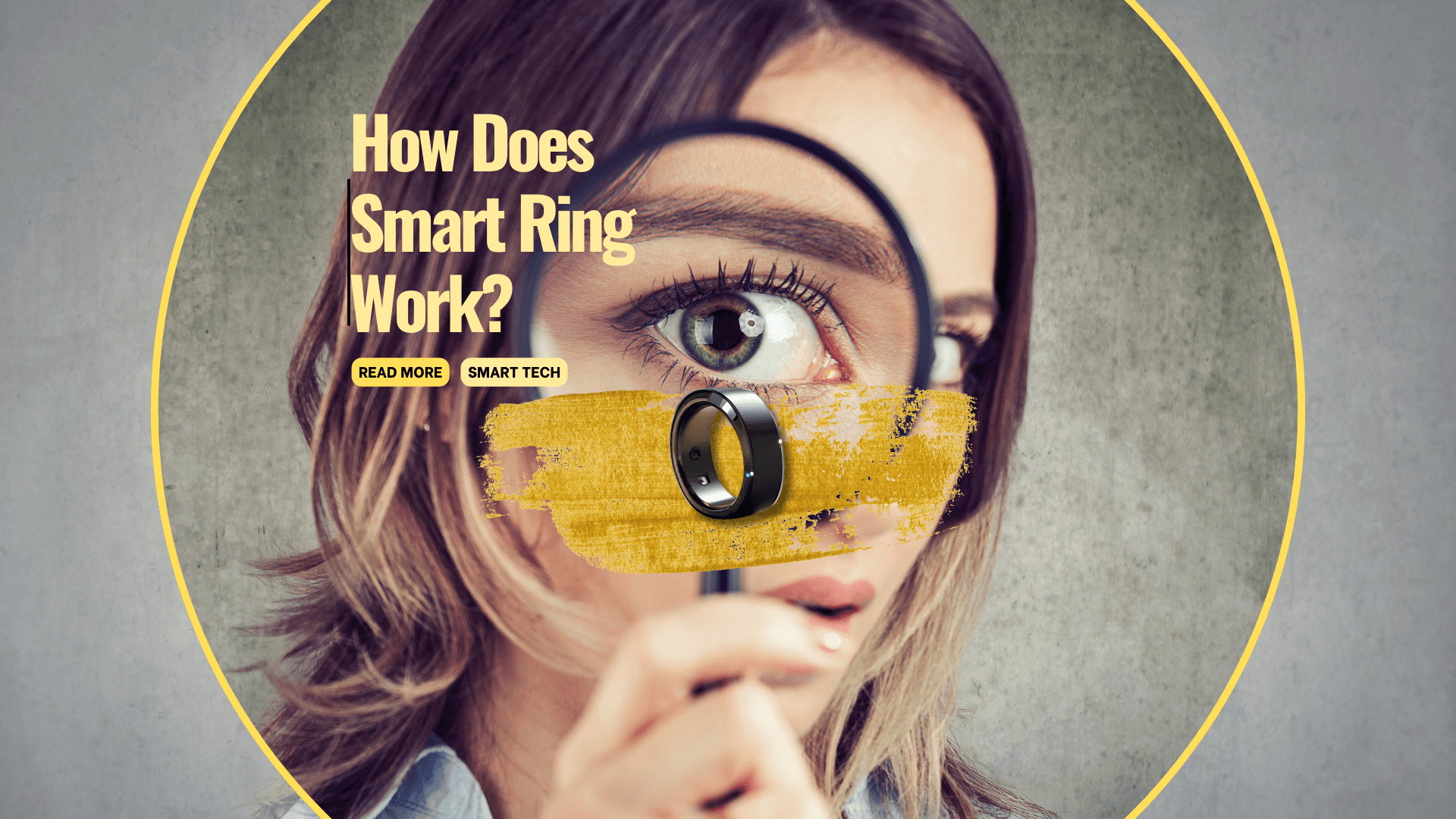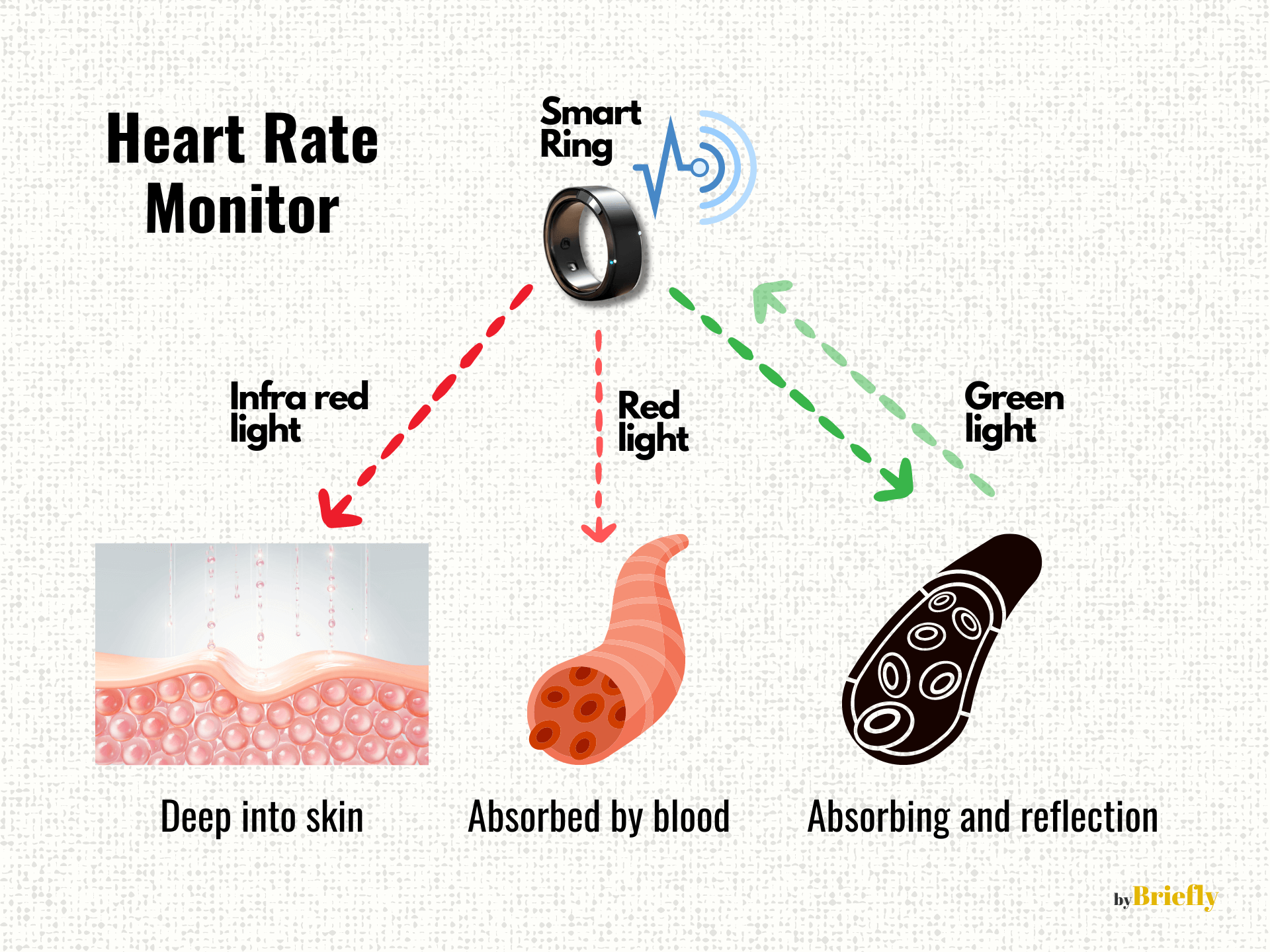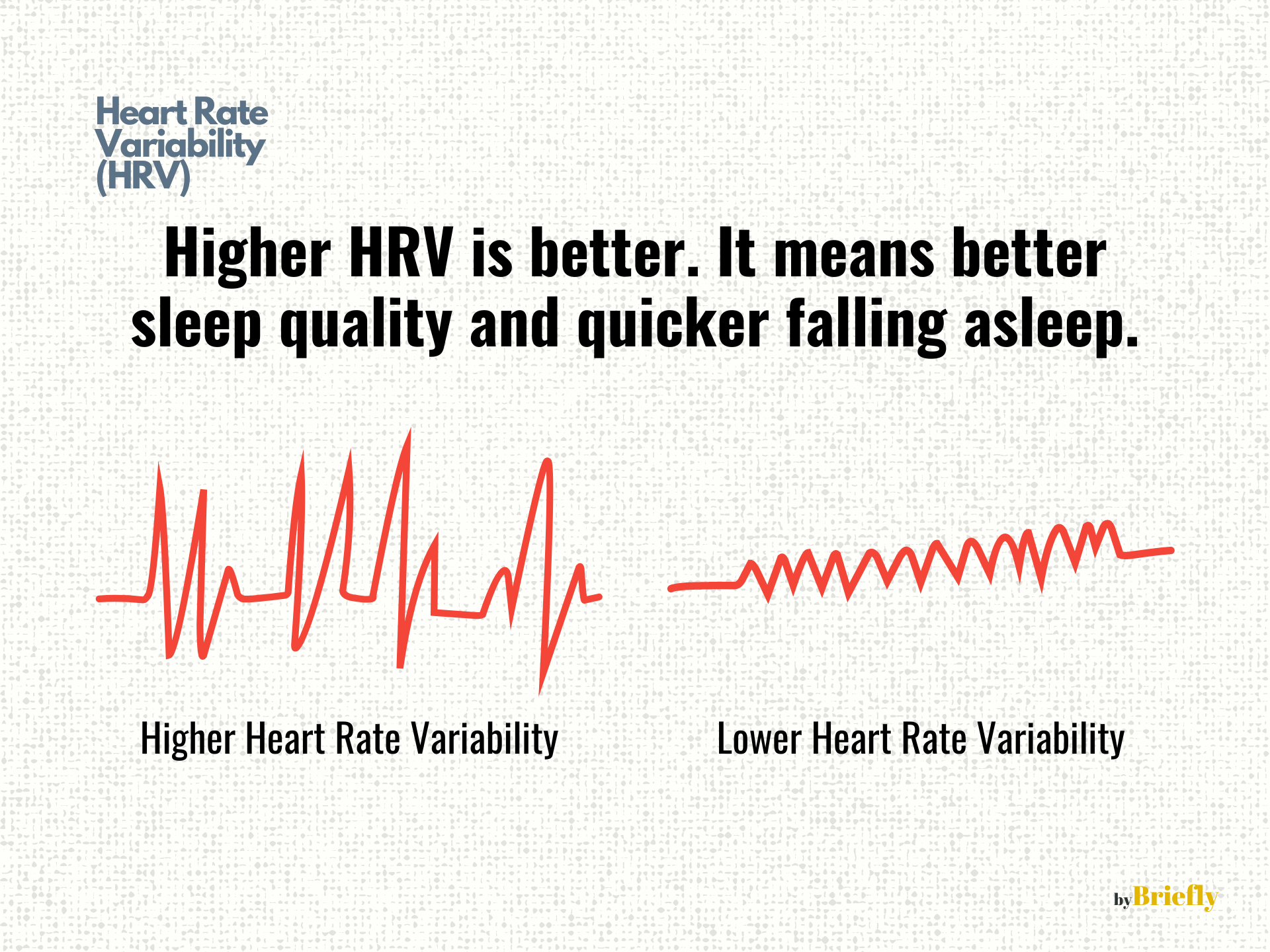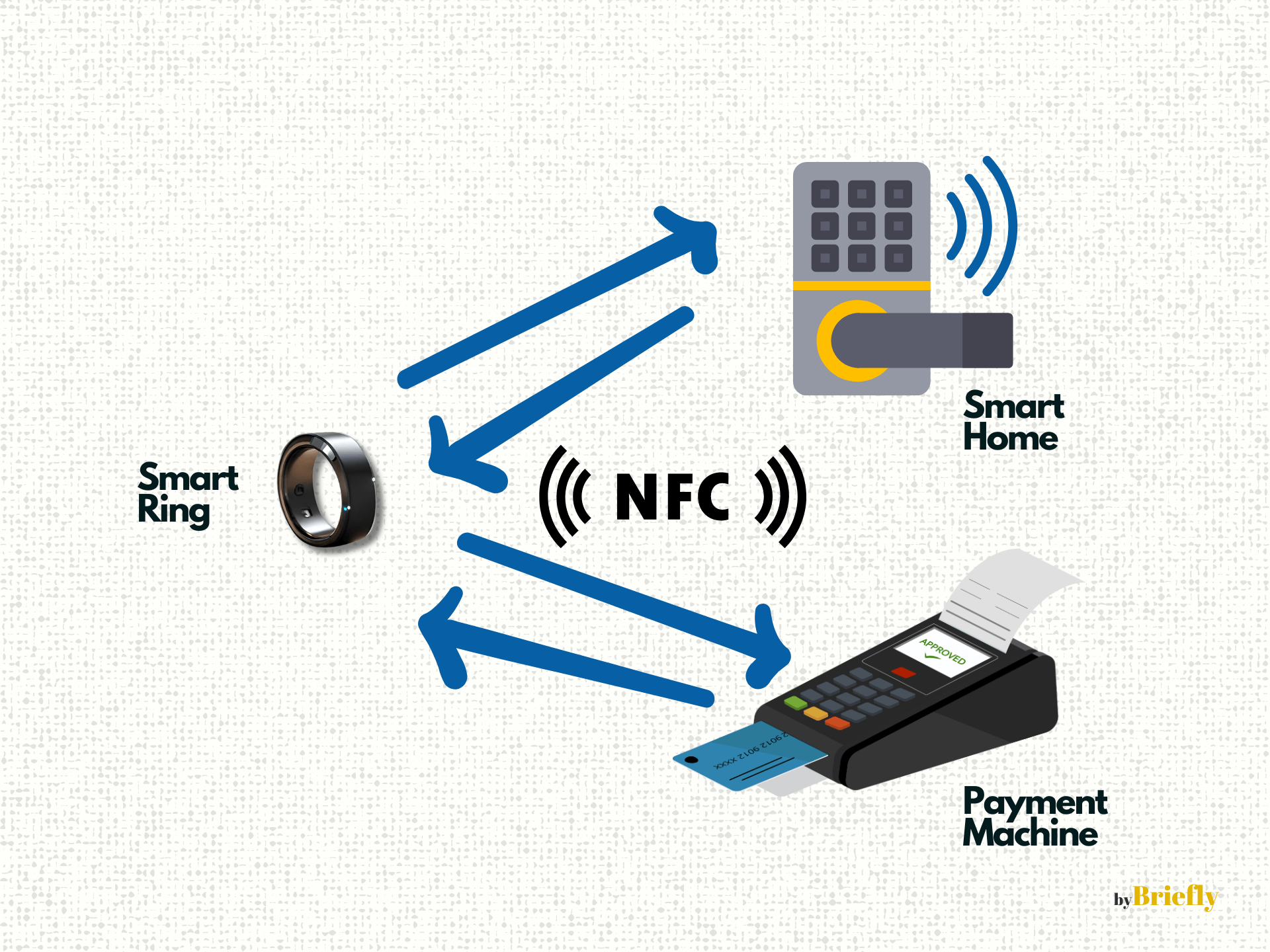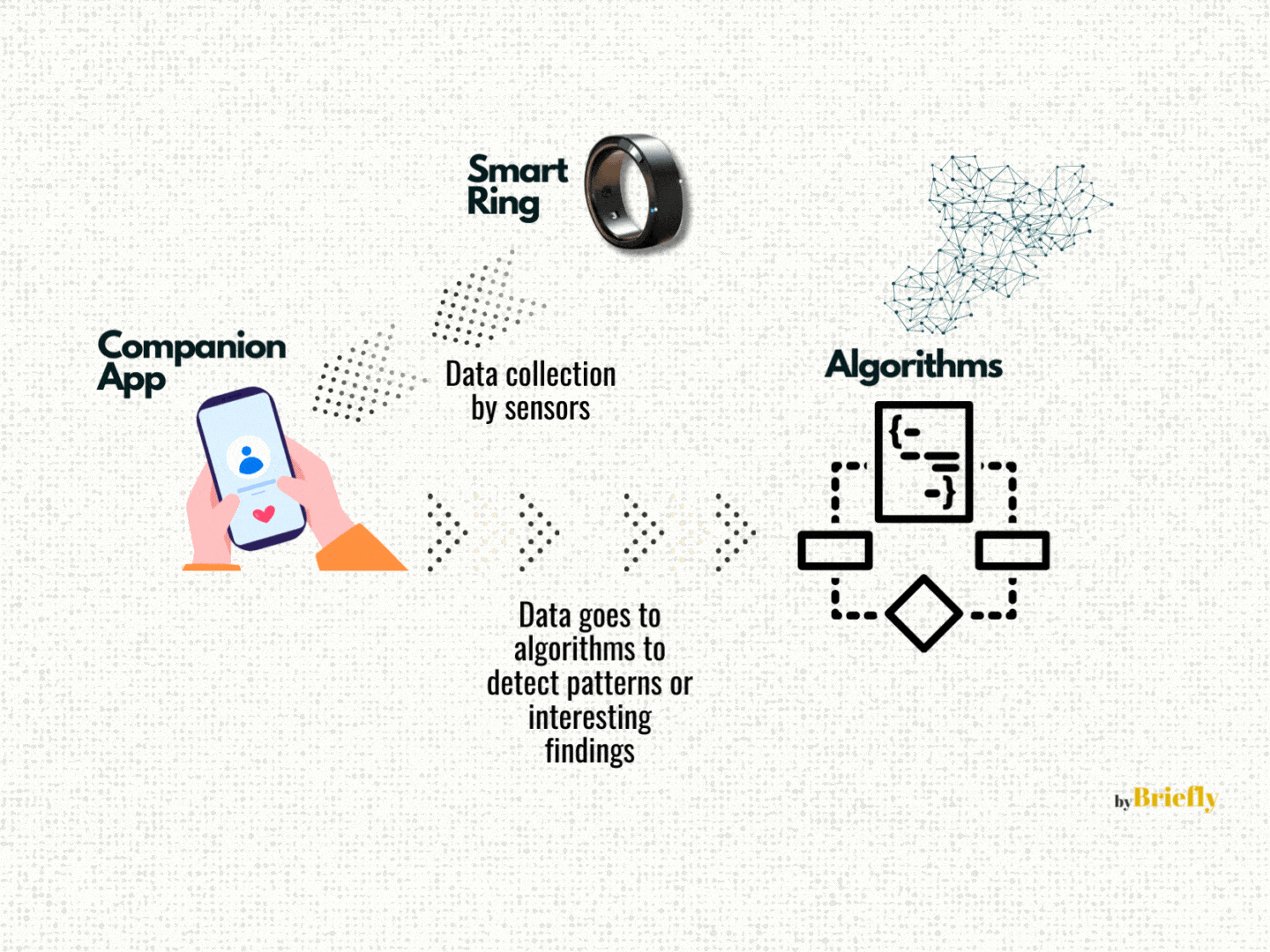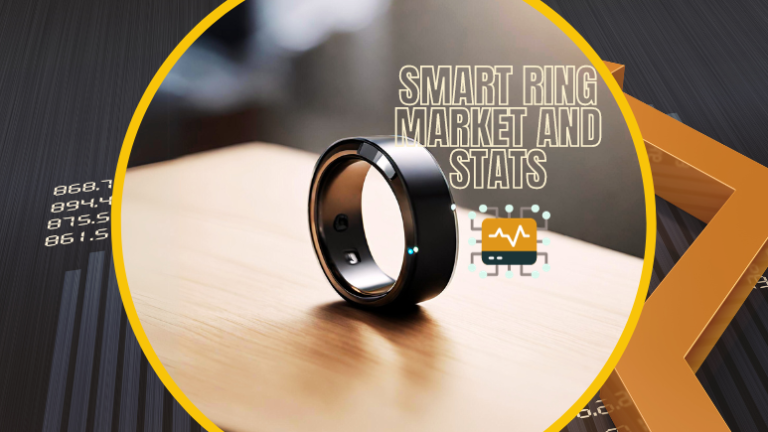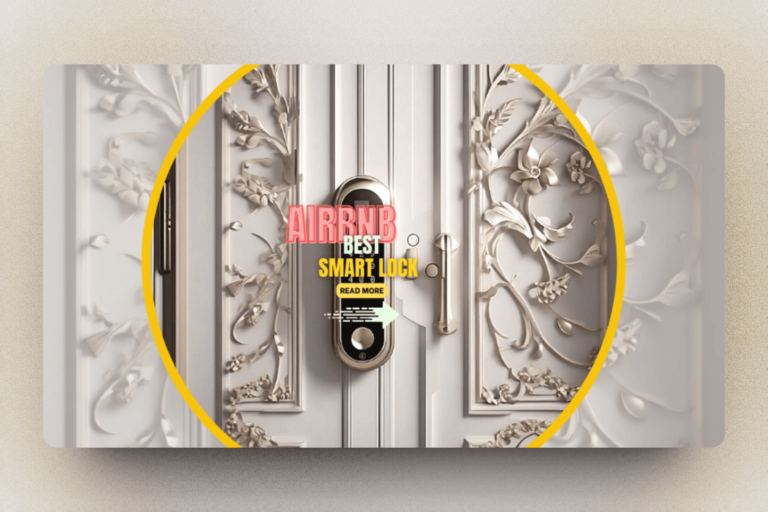Smart rings are a type of wearable device, like traditional jewelry, that you put on your index finger. With many sensors built into the ring, it can measure different things like sleep, fitness, and health information.
The three main sensors in these rings are:
-
- Accelerometers for motion tracking
- Heart rate monitor sensors for health monitoring
- Temperature sensors
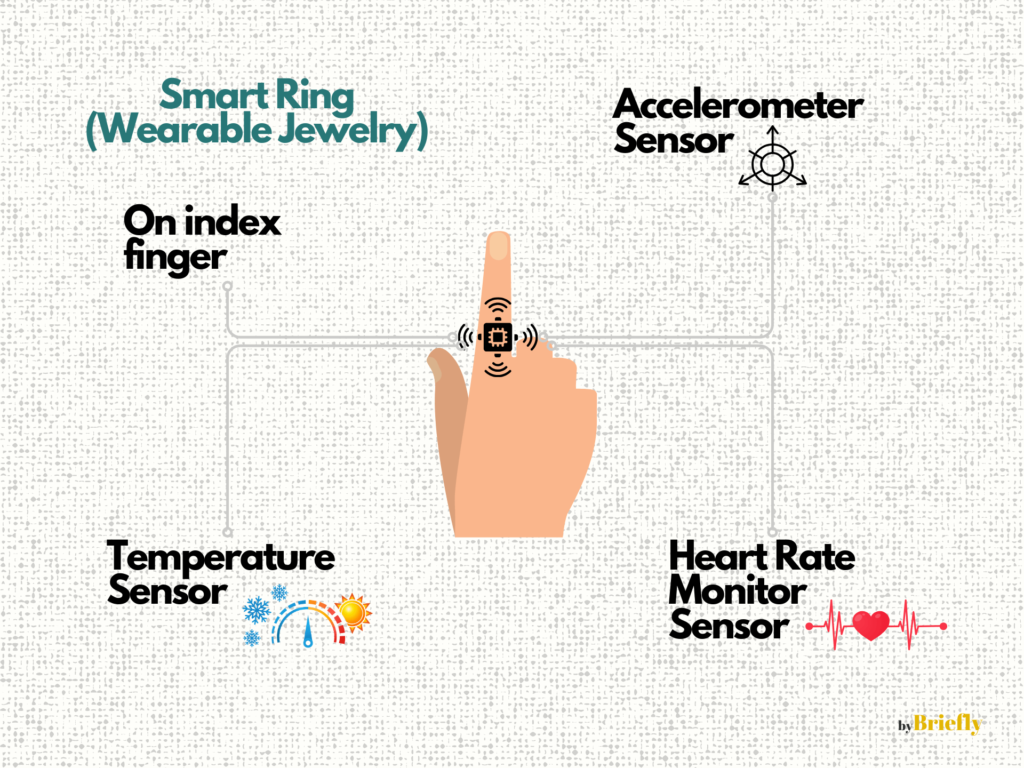
Table of Contents
Sensors
Accelerometer in Smart Rings
With an accelerometer in a smart ring, the ring can detect acceleration, tilt, and movement changes. It uses MEMS-based technology. You can think of it as an electromechanical and mechanical component that responds to external forces like gravity and movement.
When the smart ring experiences acceleration, velocity changes, or orientation changes, the MEMS-based accelerometer detects them immediately.
Modern smart rings incorporate three-axis accelerometers. That means detecting movement along three perpendicular axes—X, Y, and Z.
This multidirectional sensing capability provides comprehensive data on the ring wearer’s physical activity and gestures, enhancing motion tracking accuracy.
With MEMS-based accelerometers, the ring can measure physical activity levels like steps counting or gesture recognition.
Heart Rate Monitor in Smart Ring
The heart sensor in the smart ring works using photoplethysmography (PPG). This technology uses a light source and a photodetector at the skin surface. It detects volumetric changes in blood in peripheral circulation using an optical technique.
Heart rate sensors similar to PPG sensors are found in some hospital devices.
PPG technology uses specific light colors. The three colors are:
- Infrared light
- Red light
- Green light
Infrared light penetrates deeper into the skin. Often used to measure blood flow and other physiological parameters. Perfusion of tissues and blood oxygenation are two examples.
Red light is absorbed by the blood and is used to measure blood volume changes. It measures the flow of blood under the skin, which varies with each beat.
Green light is also absorbed by the blood, and uses to measure heart rate. Calculated by measuring the amount of green light absorbed and reflected back.
Using continuous light absorption and reflection, the heart sensor measures your heart rate. It captures these measurements in real-time.
With the heart sensor, you get insights into your overall health and well-being based on your heart rate data. You can understand your resting heart rate, heart rate variability (HRV), and how it reacts to different things.
Imagine your body as a car.
When the car is parked and turned off, it’s not using fuel and at rest. Similarly, your resting heart rate is like a car at rest.
It’s the number of times your heart beats per minute when you’re not exerting yourself, just like a car not taking in fuel when parked.
A lower resting heart rate can be compared to a car idled smoothly, using less fuel. In contrast, a higher resting heart rate can be like a car that is idle, using more fuel even when not moving.
Now, think of your body as a musical band.
When a band performs a song, the rhythm and timing of the music can vary, creating a dynamic and interesting performance.
Similarly, heart rate variability is like the rhythm and variation in heartbeat timing.
Higher heart rate variability is like a band playing a diverse and captivating melody at varying tempos. In contrast, lower heart rate variability is like a band playing a monotonous and unchanging rhythm.
Higher HRV is linked to quicker falling asleep and better overall sleep quality, especially during stressful times.
Low HRV, showing poor adaptability to stress and relaxation, can affect sleep quality. Consistently getting good-quality sleep can improve HRV, leading to better sleep, energy, mood, and overall health.
Temperature Sensor in Smart Ring
Typically, a smart ring uses a Negative Temperature Coefficient (NTC) thermistor to measure temperature. Temperature is measured directly against the skin, so it’s more accurate than ambient temperature sensors.
The smart ring is worn on the finger, close to the body’s core. This gives a more accurate temperature reading than smartwatches.
Continuous temperature data from the smart ring can provide valuable health and wellness insights.
1. Health Monitoring
Wearing a smart ring continuously keeps track of your body temperature.
If, for example, your temperature rises even before you feel sick, the ring can send an alert to your phone. This early warning might prompt you to test for an illness, like COVID-19. By catching the problem early, you can avoid spreading illness to others.
This way, the smart ring helps identify potential health issues before they become more serious, stopping disease spread.
2. Sleep Quality Assessment
As we sleep, our body temperature naturally fluctuates with the different sleep stages.
For instance, during REM (rapid eye movement) sleep, our body temperature tends to rise, and during non-REM sleep, it tends to decrease.
Now, if the smart ring detects irregularities in these temperature patterns, it might indicate disruptions in our sleep cycles.
For example, if someone consistently shows a rise in body temperature during non-REM sleep, it could be a sign of a sleep disorder.
The smart ring can provide insights into sleep quality and potentially identify sleep-related issues by tracking temperature patterns.
3. Menstrual Cycle Tracking
Wearing a smart ring throughout the month monitors your body temperature.
As a woman’s menstrual cycle progresses, her body temperature fluctuates.
For example, just before ovulation, a woman’s body temperature typically rises slightly. By tracking these temperature changes, the smart ring can predict ovulation and menstrual cycles.
Say, if the smart ring consistently detects a rise in body temperature around the same time each month, it can indicate ovulation.
You can use this information to figure out when you’re most fertile if you’re trying to conceive.
Plus, for women trying to track their menstrual cycles for health or family planning purposes, this data can provide valuable insights into their reproductive health.
With its ability to monitor temperature changes, the smart ring can be used to track and predict menstrual cycles, which can help with family planning.
4. Fitness and Recovery
Body temperature rises after exercise because of increased metabolic activity.
But, as the body recovers, the temperature should gradually return to its normal range.
A high body temperature means your body hasn’t fully recovered from your workout.
5. Stress Levels
Body temperature changes can indicate stress levels.
When the body experiences stress, it triggers physiological responses, including body temperature changes. Monitoring these temperature changes can give you insight into stress levels.
In this case, let’s consider a situation where an individual is in a stressful work environment, facing tight deadlines and high-pressure tasks. As stress mounts, the body’s physiological response may include an increase in body temperature.
Continuous monitoring through a smart ring can detect these temperature changes, indicating stress.
Oura, and similar smart rings, analyze this data by continuously tracking body temperature patterns and correlating them to other physiological and behavioral indicators.
By integrating body temperature data with metrics such as heart rate variability, sleep quality, and activity levels, Oura can provide a comprehensive picture of an individual’s stress levels.
Smart rings can detect changes in body temperature, sleep disturbances, or heart rate variability when stress is high.
Using advanced algorithms and machine learning, smart rings can provide personalized insights and recommendations to manage stress.
This may include suggestions for relaxation techniques, mindfulness practices, or adjustments to daily routines to alleviate stress and promote overall well-being.
Connectivity and Syncing
Smart rings typically have three forms of connectivity:
-
- Bluetooth connection
- Near-field communication
- Wireless charging connection
Syncing and data transfer happen between the smart ring and the companion app, or the payment machine or with the charger.
Bluetooth Connectivity
Bluetooth is a close-range wireless technology that allows two Bluetooth-enabled devices to communicate with each other.
Smart rings use Bluetooth to sync data collected by their sensors to a smartphone app.
Also, Bluetooth can make smart rings into remote controls for other Bluetooth-enabled devices. Using vibration or alerting you to an incoming call without disturbing your work.
The range of Bluetooth connectivity for smart rings is usually about 20-30 feet, but that can be affected by the phone’s Bluetooth strength and interference from walls.
Near-field Communication (NFC)
NFC technology enhances the functionality of smart rings by making it easy to communicate between devices within close proximity.
When you’re close enough to two NFC-enabled devices, they create an electromagnetic field.By modulating the electromagnetic field induced between them, the active NFC device powers up the passive NFC device (in this case, the smart ring).
Imagine when making a purchase in the exhibition’s gift shop, you simply tap your smart ring against the contactless payment terminal, swiftly and securely completing the transaction.
NFC can be used in more applications.
A smart ring with NFC chips simplifies authentication processes, making accessing authorized areas and devices easier.
The smart ring also supports contactless payments, so users can make seamless transactions with a simple tap, removing the need to fumble with a credit card.
In addition, smart rings with NFC capabilities let users manage connected home devices, which shows the technology’s adaptability and convenience.
Wireless Charging
Smart rings usually have wireless charging.
There’s no need for cables and it’s more convenient. There are smart rings that come with tiny chargers that don’t have cables. The chargers have a USB-C input.
Data Collection, Processing, and Insight
Smart rings process data using algorithms to generate insights and recommendations.
To analyze the data, they use advanced algorithms and machine learning techniques. Using these algorithms, you can identify patterns, identify trends, and get personalized recommendations based on your needs.
If a smart ring detects irregular sleep patterns, it might tell you to adjust bedtime routines or get professional help.
Plus, smart rings help users achieve their health and wellness goals by giving them personalized recommendations.
As artificial intelligence (AI) and machine learning algorithms are integrated into smart rings, they will learn from users’ behavior over time. It’ll ensure smart rings’ recommendations are tailored to each person’s unique needs and preferences.

